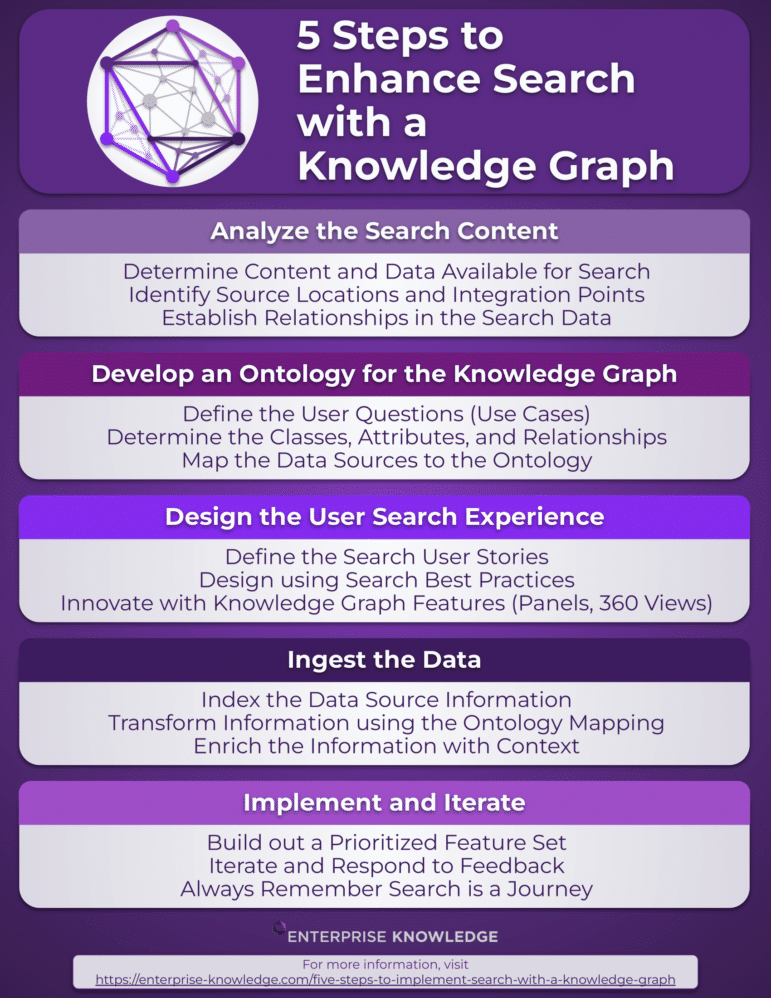As search engines and portals evolve, users have come to expect more advanced features common to popular websites like Google or Amazon. Users expect search engines to understand what they are asking for and give them the ability to easily scan and drill down to the desired information.
Knowledge graphs are commonly paired with enterprise search to meet these expectations, enabling users to explore connections between information and extend search results with contextual data. To help get started enhancing your search results with a knowledge graph, we put together the following five-step process that adheres to search, knowledge graph, and search design best practices.
For a deeper dive into each of the five steps, check out my corresponding white paper on the topic. EK has expertise in enterprise search, ontology design, and knowledge graph implementations, and we would love to work with you on your next search journey. Please feel free to contact us for more information.

